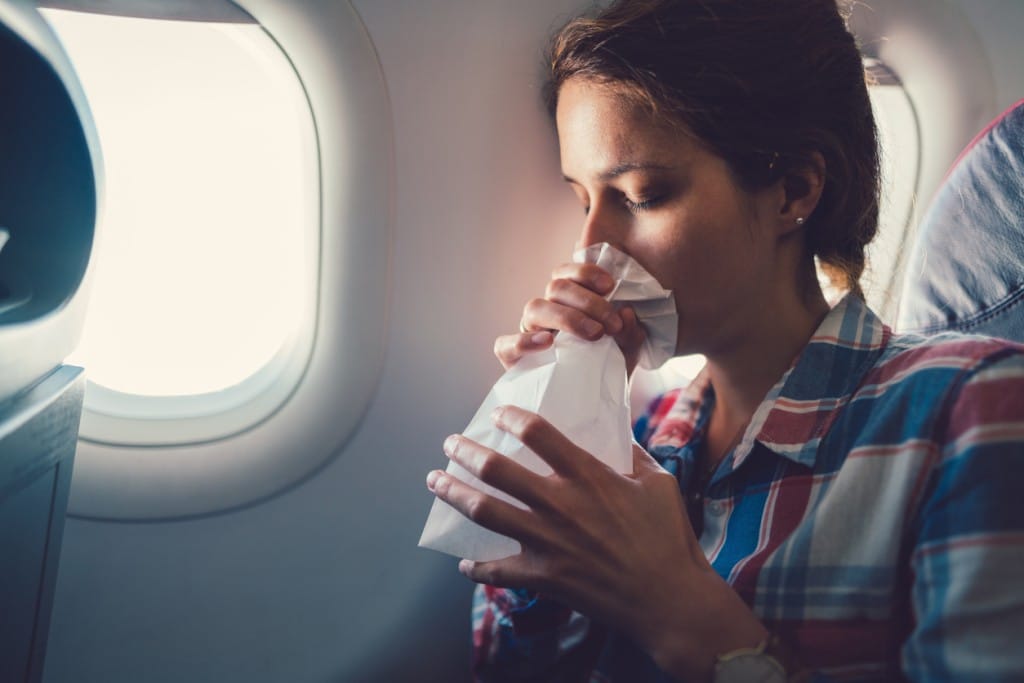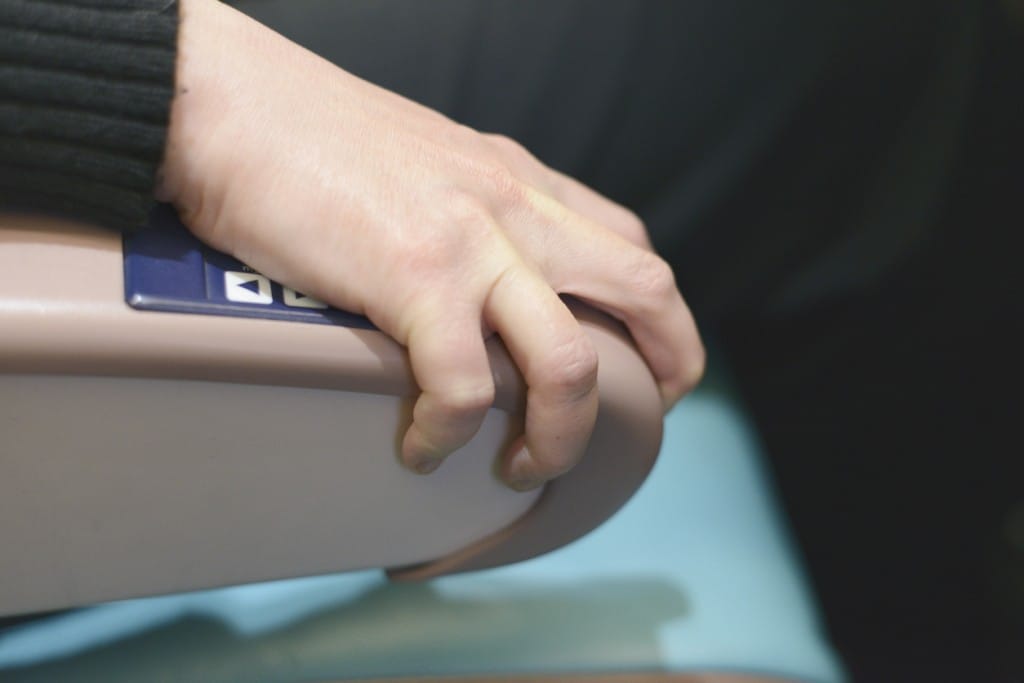Tips and Tricks to Help Manage Your Aviophobia
Aviophobia may feel overwhelming, but with the right supports, it doesn’t have to hold you back. Here’s how you can start working on your fear today!
Does the idea of taking to the skies strike fear in your heart? If you suffer from Aviophobia (the fear of flying), you probably relate to this sentiment a great deal. In a world where people travel large distances more often than ever, suffering from a fear of flying can seriously cripple your potential for adventure and work.
Fortunately, there’s a tremendous amount of research available showing that patients with aviophobia don’t have to suffer forever. Depending on the level of your fear, you may be able to negate it with just a small amount of effort. Here’s how you can start working on your fear right now!
Understand the Symptoms of Aviophobia
Aviophobia can bring on a long list of symptoms, each of which can be decidedly debilitating, but many of these symptoms can be caused by illness, too. Recognizing the symptoms and how they connect with each other can help you determine whether you’re experiencing aviophobia or some other medical condition.
The most common symptoms include:
- Headaches
- Clammy skin
- Sweating
- Muscle spasms
- High heart rates
- Stomach pains
- Stomach cramping
- Diarrhea/constipation
- Shortness of breath
- Anxiety and/or irritability
- Heart palpitations
- Chest pains
Most of these symptoms fall under the same umbrella – anxiety and/or panic attacks. However, unlike General Anxiety Disorder or Panic Disorder, the symptoms of aviophobia go away after you are no longer exposed to the trigger (flying).
Unfortunately, anxiety and adrenaline can often make flyers feel as if they’re “having a heart attack” or dying; it is exceptionally rare for this to actually be the case. Usually, this is simply a symptom of your body being forced into “fight or flight” mode (no pun intended). By working on your fear, you can successfully reduce the incidence of these symptoms.
One small caveat: some symptoms, (including chest pains and heart palpitations) should always be addressed by a physician to rule out other serious health concerns. Although anxiety is by far the most common cause, it’s better to be safe about your health.
How to Manage Aviophobia
Managing this is possible, and there are many techniques you can use to achieve it. The most common ways to manage aviophobia include:
- Utilizing deep breathing exercises
- Types of hands-on therapy
- Meditation
- Flying charter instead
- Medication
Below, we explore each of these techniques and the benefits of each in detail.
Try Deep Breathing Exercises
If your fear is mild, simple deep breathing exercises alone may be enough to bring you back down to Earth. Start by breathing in deeply and slowly to the count of three or four (whatever is most comfortable. Then, hold the breath for the same count. Finally, breathe out slowly, following the same count.
Breathing exercises work best when done “low and slow,” so actively try to avoid rapid breathing or hyperventilating. If you find yourself getting dizzy or feeling uncomfortable, you’re probably breathing a little bit too fast.
Seek Professional Help
We tend to think of therapy as something people seek when they have long-term, chronic mental health struggles. Truthfully, psychotherapy is a great way to address even infrequent concerns like aviophobia. Through Cognitive Behavioral Therapy (CBT) or Dialectical Behavioral Therapy (DBT), your therapist can help you face your fears head-on. Both of these forms of psychotherapy focus on finding the source of fears and creating new coping skills that alleviate fear symptoms.
Licensed therapists can also help you engage in a treatment format known as Exposure Therapy. This treatment focuses on slowly acclimatizing you to flying. You may start with simply visiting the airport while your therapist guides you through your feelings, and then move on to boarding an aircraft. Finally, your therapist may guide you through a short flight.
As a therapy approach, Exposure Therapy has the highest rate of success other than medication intervention when treating phobias. If you’ve tried other methods with no luck, it may be your best bet.
Take Up Meditation
Research shows that meditation can greatly reduce anxiety, especially if you practice it regularly over time. This isn’t the kind of treatment approach that’s likely to fix your issues if you just do it when you’re flying; instead, you should sit and meditate in whatever way you prefer for at least 10 to 20 minutes a day. Some flyers prefer religious meditation, while others engage in simple sitting meditation. Still others use guided meditations to recenter themselves (or at least distract from their surroundings).
Struggling with sitting meditation? You can meditate in movement, too. Tai Chi and Yoga are excellent ways to recenter and ground yourself, and you can use what you learn there while seated in the skies.
Fly Charter Instead
Often, much of the anxiety flyers with aviophobia experience stems from fearing what other people will think of them if they experience anxiety on a commercial flight. This is common in all forms of anxiety; the individual experiencing the anxiety can become so fearful of what they might experience, the anticipation becomes worse than the reality. This is how conditions like agoraphobia (fear of going outside) slowly develop.
While you aren’t likely to experience agoraphobia as a result of aviophobia, you may be able to reduce some of the anxiety by flying charter instead. Charter flights are private, and furthermore, most airlines are well-practiced in handling aviophobia sensitively. If something does happen, there’s no need to worry about bothering other passengers along the way. Even the added peace and quiet of a charter flight is enough to soothe many aviophobia sufferers – making their fear of flying more like a commercial flight phobia.
If All Else Fails, Consider Medication
If you’ve tried everything and you still experience unbearable fear when you fly, or if you can’t fly at all right now, medication may be an option. Short or long-acting sedatives like Ativan, Clonazepam, and Vistaril suppress the Central Nervous System (CNS). Medications like Metoprolol, a beta blocker, suppress adrenaline and the fear response in your body.
Exactly if or which of these medications are suitable depends on your current health condition and medications; your doctor can best advise you on the subject. Many patients find light sedation more than enough to suppress severe fears before they fly, allowing for a reactive approach with each flight.
Final Thoughts
There’s a whole world of adventure waiting for you out there, filled with luxurious flights, incredible destinations, and plenty of fun along the way. Take your first baby step to find help or speak with a private charter jet company about accommodating your needs. Sometimes, what you need most is a friendly, understanding crew to get you through the flight. The right company will always be happy to do whatever they can to help!



